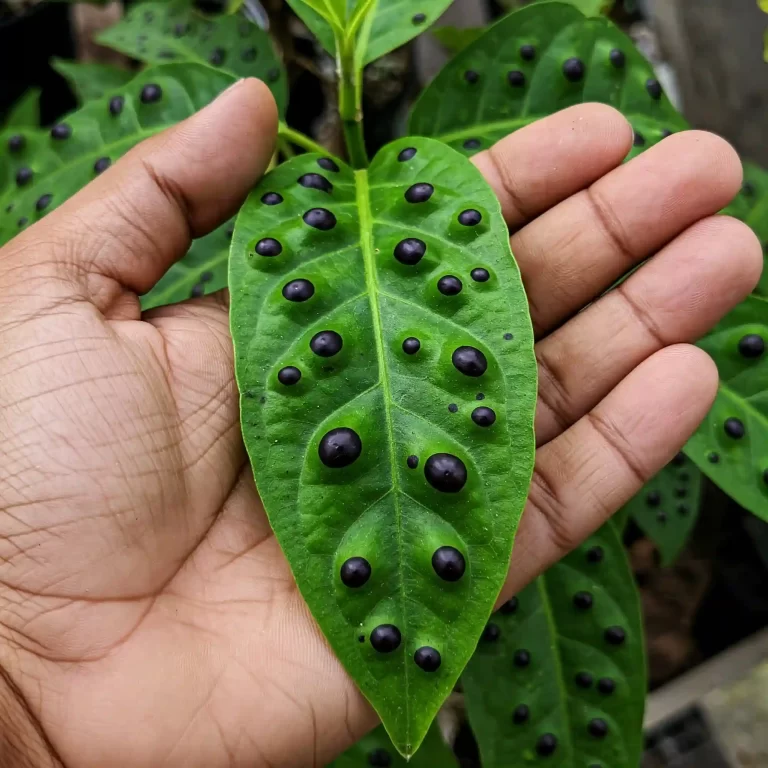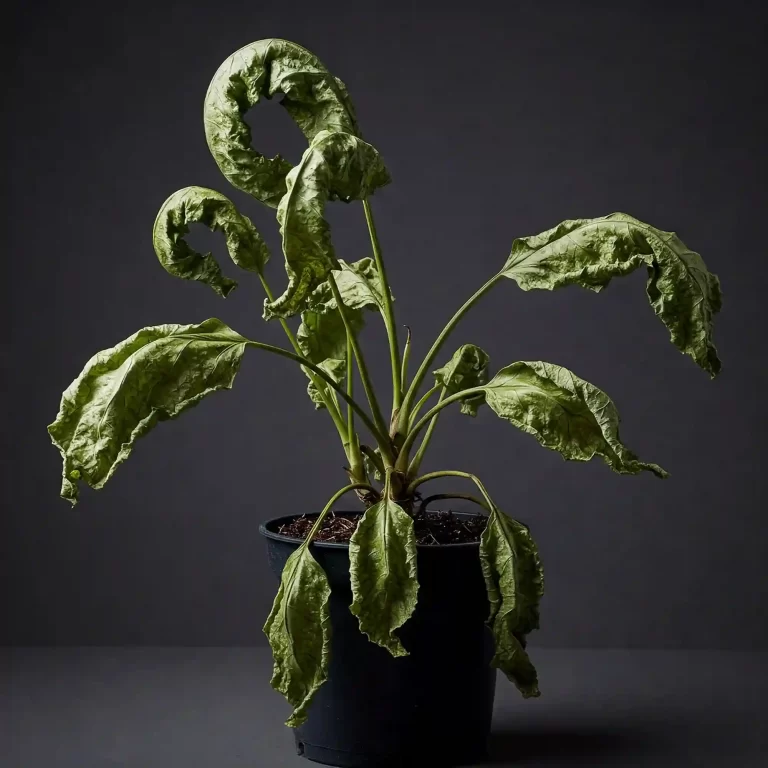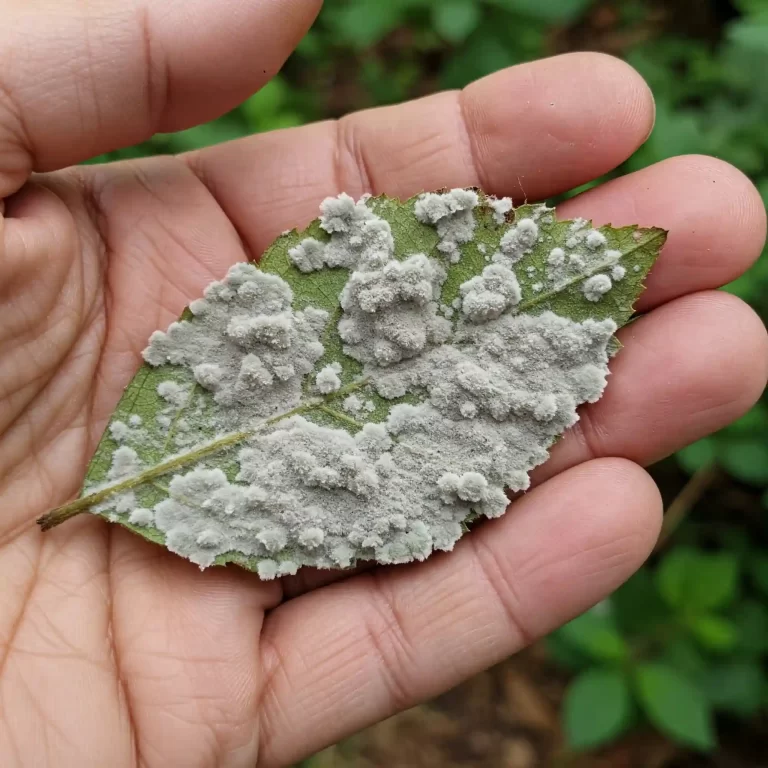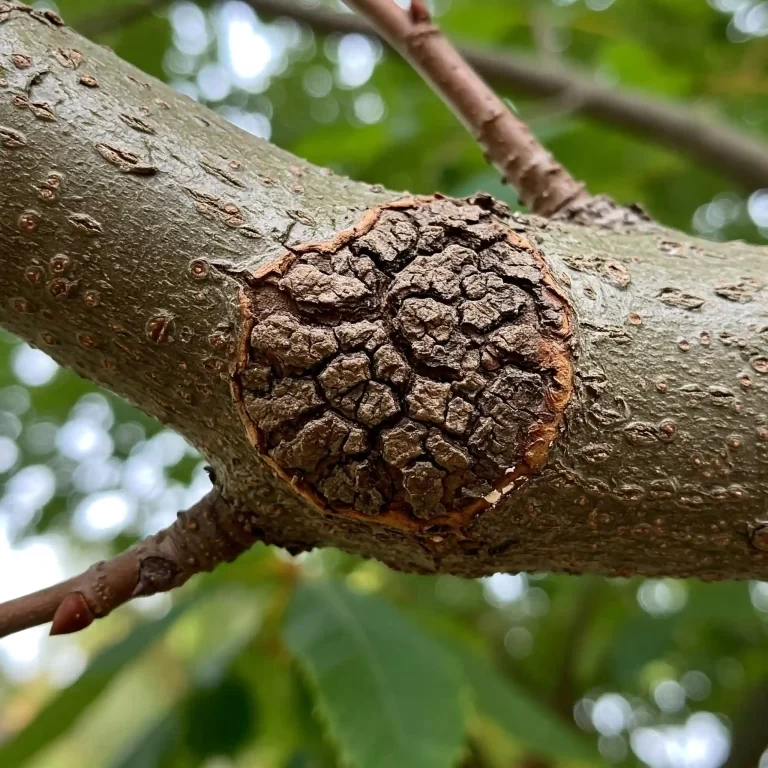Have you ever noticed unsightly brown patches creeping across your once-lush lawn? Or perhaps the blades of your prized Kentucky bluegrass are developing dark spots, seemingly overnight? These are telltale signs of fungal diseases, and one of the most common culprits is Bipolaris, the cause of both crown rot and leaf spot. I know how frustrating it is to invest time and effort into creating a beautiful lawn, only to see it ravaged by disease. I’ve been there myself, battling these very issues in my own garden. But don’t despair! There are effective ways to manage and even prevent these fungal foes. In this comprehensive guide, I’ll share my years of experience and knowledge to help you understand, identify, and combat Bipolaris crown rot and leaf spot, ensuring your lawn thrives.
Decoding Bipolaris: Understanding Crown Rot and Leaf Spot
Let’s start with the basics. What exactly is Bipolaris crown rot and leaf spot? Simply put, it’s a dual-pronged fungal disease that attacks both the crown (the base of the plant where the roots and shoots meet) and the leaves of various grasses. The disease is caused by fungi of the Bipolaris genus, with Bipolaris sorokiniana being the most common offender, especially in turfgrass. This fungus is a ubiquitous presence in the soil and thatch layer of lawns, waiting for the right conditions to strike.
The name itself gives you a clue about the disease’s impact. “Crown rot” refers to the decay that occurs at the base of the plant, disrupting the flow of water and nutrients. “Leaf spot,” on the other hand, describes the characteristic dark spots that appear on the leaves, reducing the plant’s ability to photosynthesize. This double attack weakens the plant significantly, making it susceptible to other stresses and ultimately leading to decline and even death.
This disease isn’t picky about its victims. While it’s particularly prevalent in cool-season turfgrasses like Kentucky bluegrass, perennial ryegrass, and tall fescue, it can also affect warm-season grasses and even cereal crops like wheat and barley. This wide host range makes understanding and managing this disease crucial for various agricultural and horticultural settings.
The Bipolaris fungus has a fascinating, albeit destructive, life cycle. It survives in the thatch, soil, and infected plant debris as spores or mycelium (the thread-like vegetative part of the fungus). When conditions are favorable—namely, high humidity, extended periods of leaf wetness, and temperatures between 60-85°F (15-30°C)—the spores germinate and begin to infect the plant. The fungus penetrates the plant tissue, causing the characteristic lesions on the leaves and decay at the crown. These lesions then produce more spores, continuing the cycle of infection. Understanding this life cycle is crucial for implementing effective control strategies.
Here’s a breakdown of the key aspects of Bipolaris:
- Causative Agent: Fungi of the Bipolaris genus (primarily Bipolaris sorokiniana).
- Target Areas: Crown (base of the plant) and leaves.
- Susceptible Plants: Cool-season turfgrasses (Kentucky bluegrass, perennial ryegrass, tall fescue), warm-season grasses, cereals (wheat, barley).
- Favorable Conditions: High humidity, extended leaf wetness, temperatures between 60-85°F (15-30°C).
- Survival Mechanism: Spores and mycelium in thatch, soil, and infected plant debris.
I remember one instance where a neighbor of mine had a beautiful Kentucky bluegrass lawn. One summer, after a period of heavy rain and high humidity, his lawn was suddenly covered in brown patches. He was devastated. After examining the grass, I diagnosed it as Bipolaris crown rot and leaf spot. We worked together to implement a management plan, and thankfully, his lawn recovered. This experience, among many others, has taught me the importance of early identification and proper management of this disease.
The impact of Bipolaris extends beyond just aesthetics. In turfgrass, it can lead to thinning, weakening, and even complete loss of turf cover, making the lawn more susceptible to weeds and other pests. In agricultural settings, it can significantly reduce crop yields, impacting food production and the livelihoods of farmers.
Here’s a table summarizing the differences between leaf spot and crown rot caused by Bipolaris:
| Feature | Leaf Spot | Crown Rot |
| Affected Area | Leaves | Crown (base of the plant) |
| Symptoms | Dark brown to black spots, often with light center | Decay, wilting, thinning, plant death |
| Impact | Reduced photosynthesis, weakened plant | Disrupted nutrient and water transport, plant death |
| Contributing Factors | Leaf wetness, humidity | Poor drainage, excessive thatch, soilborne inoculum |
This detailed explanation should give you a solid understanding of what Bipolaris crown rot and leaf spot is, its impact, and its life cycle. In the next section, we’ll delve into the specific symptoms to help you identify this disease in your own lawn or garden.
Spotting the Signs: Identifying Bipolaris Crown Rot and Leaf Spot
Identifying Bipolaris early is crucial for effective management. Both leaf spot and crown rot have distinct symptoms that, when observed together, strongly suggest a Bipolaris infection. Let’s break down each set of symptoms:
Leaf Spot Symptoms:
- Initial Appearance: The first sign of leaf spot is often small, dark brown to black spots on the grass blades. These spots can vary in size and shape, but they typically have a distinct, well-defined border.
- Progression: As the disease progresses, the spots enlarge and may develop a lighter tan or gray center, creating a characteristic “eye spot” appearance. This is a key diagnostic feature of Bipolaris leaf spot.
- Lesion Coalescence: In severe cases, the spots can merge together, forming larger, irregular blotches that can blight entire leaves. This can give the lawn a scorched or burnt appearance.
- Affected Blades: The leaf spots can appear on any part of the leaf blade, but they are often more prevalent on the lower leaves and sheaths.
Crown Rot Symptoms:
- Basal Decay: The most telling sign of crown rot is the decay of the crown, the plant’s base where the roots and shoots meet. This decay can be seen as a dark brown or black discoloration of the crown tissue.
- Wilting and Thinning: As the crown rots, the plant’s ability to absorb water and nutrients is compromised, leading to wilting and thinning of the turf. This can manifest as irregular patches of thin or dead grass in the lawn.
- “Pulling Up” Easily: Infected plants often lose their root system due to the crown rot, making them easy to pull up from the soil. This is a simple test you can perform to check for crown rot.
- Overall Decline: In severe cases, the crown rot can lead to the complete death of the plant, leaving behind bare patches in the lawn.
Distinguishing Bipolaris from Other Diseases:
It’s important to distinguish Bipolaris from other common lawn diseases, as the management strategies can differ. Here are a few key distinctions:
- Brown Patch: Brown patch typically causes larger, more irregular patches of dead grass, often with a characteristic “smoke ring” around the perimeter. Bipolaris leaf spots are generally smaller and more defined.
- Dollar Spot: Dollar spot causes small, circular, bleached-white or straw-colored spots about the size of a silver dollar. Bipolaris leaf spots are darker and more irregular in shape.
- Pythium Blight: Pythium blight is a fast-spreading disease that causes greasy, dark patches that can quickly kill large areas of turf. Bipolaris progresses more slowly and has distinct leaf spot symptoms.
Factors Influencing Symptom Severity:
The severity of Bipolaris symptoms can be influenced by several factors, including:
- Grass Type: Some grass species and varieties are more susceptible to Bipolaris than others.
- Environmental Conditions: Hot, humid weather and prolonged periods of leaf wetness favor disease development.
- Cultural Practices: Improper mowing, watering, and fertilization practices can increase the risk of infection.
By carefully observing your lawn and looking for these specific symptoms, you can accurately identify Bipolaris crown rot and leaf spot and take appropriate action. In the next section, we’ll delve into the causes of this disease and the factors that contribute to its development.
The Culprits Behind Bipolaris: Understanding the Causes
Bipolaris crown rot and leaf spot, as I’ve mentioned, is a fungal disease. This means that the primary cause is the presence of a fungal pathogen, specifically fungi within the Bipolaris genus. However, the development and severity of the disease are not solely dependent on the presence of the fungus. Several environmental and cultural factors play a crucial role, creating what plant pathologists refer to as the “disease triangle.” This triangle consists of three components: the host (the plant), the pathogen (the Bipolaris fungus), and the environment. For disease to occur, all three components must be present and interacting in a favorable way.
The Role of the Bipolaris Fungus:
The Bipolaris fungus, particularly Bipolaris sorokiniana, is a common inhabitant of soil and thatch. It survives in these environments as spores or mycelium. Spores are microscopic, seed-like structures that can withstand harsh conditions and remain dormant until favorable conditions arise. Mycelium, on the other hand, is the vegetative part of the fungus, consisting of thread-like filaments that grow through the soil and plant tissue.
When conditions are right, the Bipolaris spores germinate and begin to infect the plant. The fungus penetrates the plant tissue, either through natural openings or wounds, and begins to grow and reproduce. This infection process leads to the characteristic symptoms of leaf spot and crown rot.
Environmental Factors:
Several environmental factors can influence the development and severity of Bipolaris diseases:
- High Humidity and Moisture: Bipolaris fungi thrive in humid and moist conditions. Extended periods of leaf wetness, caused by frequent rainfall, heavy dew, or overwatering, create an ideal environment for spore germination and infection.
- Poor Air Circulation: Poor air circulation can trap moisture around the plants, further increasing the risk of disease. This is often a problem in dense turf or in areas with limited airflow.
- Excessive Thatch Buildup: Thatch, the layer of dead organic matter that accumulates between the grass blades and the soil surface, can provide a favorable environment for the Bipolaris fungus to survive and thrive. Excessive thatch can also trap moisture and reduce air circulation, further increasing disease risk.
- High Nitrogen Fertilization: While nitrogen is an essential nutrient for plant growth, excessive nitrogen fertilization can make plants more susceptible to disease. This is because high nitrogen levels can promote lush, succulent growth, which is more easily infected by fungi.
- Plant Stress: Plants that are stressed due to drought, heat, or other factors are more susceptible to disease. Stress weakens the plant’s natural defenses, making it easier for the fungus to infect and cause damage.
Cultural Practices:
Cultural practices, such as mowing, watering, and fertilization, can also play a significant role in disease development. Improper cultural practices can create conditions that favor the Bipolaris fungus, while proper practices can help to prevent disease.
Here are some examples of how cultural practices can influence Bipolaris diseases:
- Mowing too short: Mowing the grass too short can stress the plants and make them more susceptible to infection.
- Watering improperly: Watering frequently and lightly can create a constantly moist environment that favors fungal growth.
- Over-fertilizing with nitrogen: As mentioned earlier, excessive nitrogen fertilization can make plants more susceptible to disease.
By understanding the role of the Bipolaris fungus, the influence of environmental factors, and the impact of cultural practices, you can take proactive steps to prevent and manage Bipolaris crown rot and leaf spot in your lawn or garden. In the next section, I’ll discuss specific prevention strategies that you can implement to protect your plants.
Prevention: Proactive Plant Care for a Healthy Lawn
Prevention, as they say, is better than cure. When it comes to Bipolaris crown rot and leaf spot, proactive plant care can significantly reduce the risk of infection and keep your lawn healthy and thriving. Here are some key strategies I’ve found effective over the years:
1. Proper Watering Techniques:
- Water deeply and infrequently: Encourage deep root growth by watering thoroughly but less often. This allows the soil to dry out between watering, reducing the humidity that favors fungal growth.
- Water in the morning: Watering early in the day allows the foliage to dry quickly, minimizing the period of leaf wetness that promotes fungal infection.
- Avoid overwatering: Overwatering creates a constantly moist environment that is ideal for fungal diseases. Monitor your lawn’s moisture levels and adjust your watering schedule accordingly.
2. Improving Drainage:
- Aerate your lawn: Aeration helps to improve soil drainage and air circulation, reducing the risk of waterlogging and creating a less favorable environment for the Bipolaris fungus.
- Amend heavy soils: If you have heavy clay soil, amend it with organic matter to improve drainage and soil structure.
- Grade the lawn: Ensure that your lawn is properly graded to prevent water from pooling in low areas.
3. Regular Aeration and Dethatching:
- Aerate annually: Aerating your lawn once a year helps to improve soil drainage and air circulation, reducing the risk of thatch buildup and fungal diseases.
- Dethatch as needed: If you have a thick layer of thatch (more than ½ inch), dethatch your lawn to remove excess organic matter and improve air circulation.
4. Balanced Fertilization:
- Avoid over-fertilizing with nitrogen: While nitrogen is essential for plant growth, excessive nitrogen can make your lawn more susceptible to disease. Use a balanced fertilizer and follow the recommended application rates.
- Consider slow-release fertilizers: Slow-release fertilizers provide a steady supply of nutrients, reducing the risk of excessive growth and disease susceptibility.
5. Mowing at the Correct Height:
- Maintain proper mowing height: Mowing your lawn at the correct height helps to promote healthy growth and reduce stress, making it less susceptible to disease.
- Avoid scalping: Scalping (mowing too short) can stress the lawn and make it more vulnerable to infection.
6. Choosing Disease-Resistant Grass Varieties:
- Select resistant varieties: When establishing a new lawn or overseeding an existing one, choose grass varieties that are known to be resistant to Bipolaris and other common diseases.
- Check with your local extension service: Your local extension service can provide information on recommended grass varieties for your area.
7. Maintaining Overall Plant Health:
- Provide adequate sunlight: Ensure that your lawn receives adequate sunlight, as shade can promote moisture retention and fungal growth.
- Control weeds: Weeds can compete with your lawn for water and nutrients, making it more susceptible to disease.
- Monitor for pests: Insect pests can weaken your lawn and make it more vulnerable to infection.
By implementing these preventive measures, you can create a healthy and resilient lawn that is less susceptible to Bipolaris crown rot and leaf spot. Remember, consistent care and attention are key to maintaining a disease-free lawn.
Taking Action: Controlling Bipolaris Infections
Despite our best efforts at prevention, sometimes Bipolaris can still take hold. If you’ve identified the symptoms of crown rot and leaf spot in your lawn, it’s time to take action. Effective control involves a combination of cultural practices and, in some cases, chemical or biological treatments. Here’s what I recommend:
1. Continue Preventive Cultural Practices:
Even when treating an active infection, it’s crucial to maintain the preventive cultural practices I discussed earlier. This includes:
- Proper watering: Continue watering deeply and infrequently, preferably in the morning.
- Improving drainage: Aerate your lawn if you haven’t already, and consider amending heavy soils.
- Maintaining proper mowing height: Avoid scalping the lawn, as this can further stress the plants.
- Balanced fertilization: Avoid over-fertilizing with nitrogen.
These practices will help to create a less favorable environment for the fungus and promote the recovery of your lawn.
2. Fungicide Application:
In many cases, fungicide application is necessary to effectively control Bipolaris infections. Here are some key points to consider:
- Choose the right fungicide: Several fungicides are effective against Bipolaris, including those containing active ingredients like azoxystrobin, propiconazole, chlorothalonil, and thiophanate-methyl. Be sure to choose a fungicide that is labeled for use on your specific type of grass and for the control of Bipolaris diseases.
- Follow label instructions: Always read and follow the instructions on the fungicide label carefully. This will ensure that you are applying the product correctly and safely.
- Apply at the correct time: Fungicides are most effective when applied preventatively or at the first sign of disease. Applying fungicides too late may not be as effective.
- Rotate fungicides: To prevent the development of fungicide resistance, it’s important to rotate between different classes of fungicides. This means using products with different active ingredients.
- Consider professional application: If you are unsure about applying fungicides yourself, consider hiring a professional lawn care service.
3. Biological Control Options:
In addition to chemical fungicides, there are also some biological control options available for managing Bipolaris. These options typically involve the use of beneficial microorganisms that can suppress the growth of the Bipolaris fungus. Some examples include:
- Beneficial bacteria: Certain bacteria, such as Bacillus subtilis, can help to suppress fungal growth in the soil.
- Mycorrhizal fungi: Mycorrhizal fungi form a symbiotic relationship with plant roots, which can help to improve plant health and resistance to disease.
- Compost tea: Compost tea can contain beneficial microorganisms that can help to suppress fungal diseases.
While biological control options may not be as effective as chemical fungicides in severe cases, they can be a good option for preventative care and for managing mild infections.
4. Combining Cultural Practices with Treatments:
The most effective approach to controlling Bipolaris is to combine preventive cultural practices with appropriate treatments. This integrated approach will help to create a healthy and resilient lawn that is less susceptible to disease.
5. Monitoring and Follow-Up:
After applying treatments, it’s important to monitor your lawn closely for signs of improvement. You may need to make additional applications of fungicide or adjust your cultural practices to achieve effective control.
Case Study:
I once worked with a homeowner who had a severe Bipolaris infection in their perennial ryegrass lawn. The lawn was thin, discolored, and had numerous patches of dead grass. We implemented a comprehensive management plan that included:
- Improving drainage: We aerated the lawn and amended the soil with compost.
- Adjusting watering practices: We recommended watering deeply and infrequently, in the morning.
- Applying a fungicide: We applied a fungicide containing propiconazole, following the label instructions carefully.
Within a few weeks, the lawn began to show significant improvement. The grass was greener, thicker, and the patches of dead grass were starting to fill in. By combining cultural practices with fungicide application, we were able to effectively control the Bipolaris infection and restore the lawn to health.
Remember, early detection and prompt action are key to managing Bipolaris crown rot and leaf spot. By following these guidelines, you can effectively control this disease and keep your lawn healthy and beautiful.
Bipolaris in Different Plants
While Bipolaris crown rot and leaf spot are commonly associated with turfgrass, these fungal diseases can also affect a variety of other plants, including cereals like wheat and barley, as well as other grasses and ornamental plants. The symptoms and management strategies can vary slightly depending on the specific plant affected. Here’s a closer look at how Bipolaris manifests in some of these other plant species:
Cereals (Wheat and Barley):
- Symptoms: In wheat and barley, Bipolaris can cause leaf spot, spot blotch, and common root rot. Leaf spot appears as dark brown lesions on the leaves, while spot blotch causes larger, more irregular blotches. Common root rot affects the roots and crown, leading to stunted growth and reduced yields.
- Management: Management strategies for Bipolaris in cereals often involve a combination of cultural practices and fungicide applications. Crop rotation, proper fertilization, and seed treatments can help to reduce disease incidence. Fungicides may be necessary in severe cases, particularly in susceptible varieties.
Other Grasses:
- Symptoms: Bipolaris can also affect other grasses, such as ryegrass, fescue, and bluegrass grown for forage or seed production. The symptoms are generally similar to those observed in turfgrass, including leaf spots and crown rot.
- Management: Management strategies for Bipolaris in these grasses are also similar to those used in turfgrass, including cultural practices and fungicide applications.
Ornamental Plants:
- Symptoms: Bipolaris can cause leaf spots and other foliar diseases on a variety of ornamental plants. The symptoms can vary depending on the specific plant species.
- Management: Management strategies for Bipolaris in ornamental plants may include cultural practices, such as removing infected leaves and improving air circulation, as well as fungicide applications.
General Management Strategies:
Regardless of the specific plant affected, there are some general management strategies that can be effective for controlling Bipolaris diseases:
- Cultural practices: Proper cultural practices, such as crop rotation, proper fertilization, and good sanitation, can help to reduce disease incidence.
- Resistant varieties: Planting resistant varieties can help to prevent disease.
- Fungicide applications: Fungicides may be necessary in severe cases, particularly in susceptible varieties.
By understanding how Bipolaris affects different plants and implementing appropriate management strategies, you can protect your plants from these damaging diseases.
Frequently Asked Questions (FAQ)
Here are some frequently asked questions about Bipolaris crown rot and leaf spot:
How to identify Bipolaris crown rot and leaf spot on turfgrass?
Bipolaris crown rot and leaf spot can be identified by the presence of dark brown lesions on the leaves and a general thinning of the turfgrass stand. The lesions may be surrounded by a yellow halo. In severe cases, the turfgrass may dieback in irregular patches.
What are the early symptoms of Bipolaris leaf blight on Kentucky bluegrass?
The early symptoms of Bipolaris leaf blight on Kentucky bluegrass include small, brown lesions on the leaves. These lesions may elongate and develop a dark brown or black center. In severe cases, the lesions may coalesce and kill the entire leaf blade.
Best fungicide for controlling Bipolaris crown rot and leaf spot in lawns?
Several fungicides are effective for controlling Bipolaris crown rot and leaf spot in lawns. Some common options include azoxystrobin, propiconazole, and thiophanate-methyl. It is important to follow the instructions on the fungicide label carefully when applying these products.
Organic methods for treating Bipolaris leaf blight and crown rot naturally?
There are several organic methods for treating Bipolaris leaf blight and crown rot naturally. One option is to apply a compost tea to the affected area. Compost tea contains beneficial microbes that can help to suppress the fungal pathogen. Another option is to use a biofungicide containing the active ingredient Bacillus subtilis.
How to prevent Bipolaris crown rot and leaf spot in newly seeded lawns?
To prevent Bipolaris crown rot and leaf spot in newly seeded lawns, it is important to plant resistant varieties of turfgrass. It is also important to avoid overwatering and to ensure that the lawn has good drainage.
What environmental conditions favor Bipolaris crown rot and leaf spot development?
Bipolaris crown rot and leaf spot are favored by warm, humid conditions. The disease is also more likely to develop in lawns that are stressed by drought or poor nutrition.
How does excessive nitrogen fertilization contribute to Bipolaris leaf blight?
Excessive nitrogen fertilization can contribute to Bipolaris leaf blight by creating a lush, dense canopy that is more susceptible to disease. Nitrogen can also promote the growth of the fungal pathogen.
Preventing Bipolaris crown rot and leaf spot through proper watering techniques?
Proper watering techniques can help to prevent Bipolaris crown rot and leaf spot by reducing the amount of time that the leaves are wet. It is important to water deeply and infrequently, and to avoid watering in the evening.
Conclusion
Bipolaris crown rot and leaf spot are serious fungal diseases that can cause significant damage to lawns and other plants. However, by understanding the causes of these diseases and implementing appropriate prevention and management strategies, you can protect your plants and keep them healthy and thriving.
Key Takeaways:
- Bipolaris crown rot and leaf spot are caused by fungi in the genus Bipolaris.
- These diseases are favored by warm, humid conditions and stressed plants.
- Proper cultural practices, such as watering deeply and infrequently, can help to prevent disease.
- Fungicides may be necessary to control severe infections.
By following the tips and advice in this article, you can effectively manage Bipolaris crown rot and leaf spot and keep your lawn and garden looking their best.




